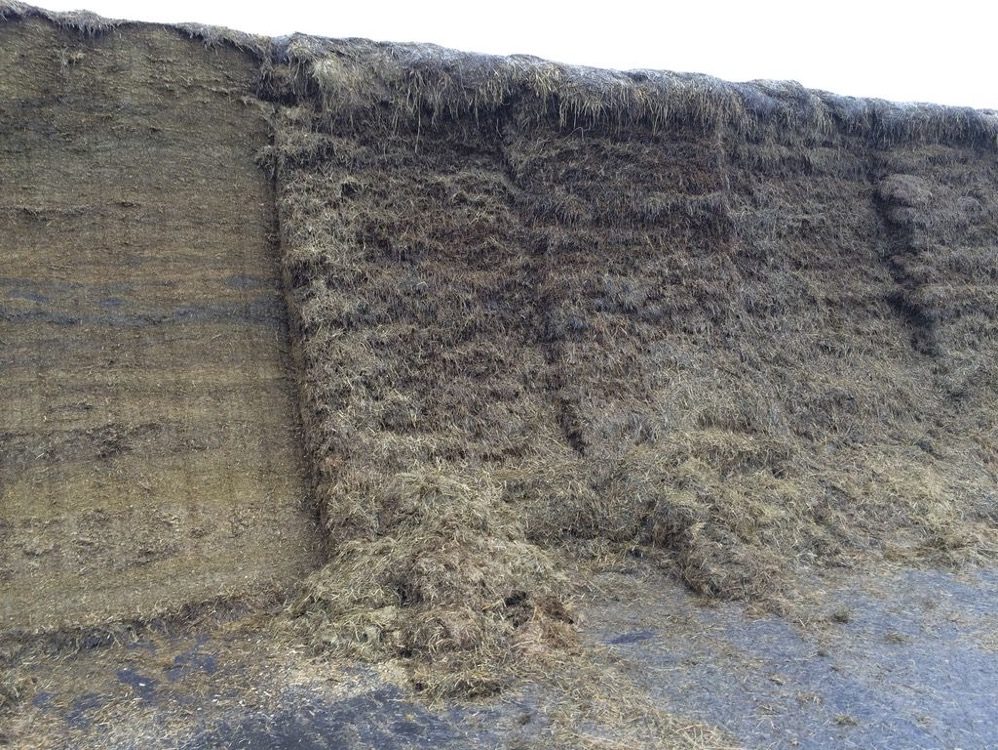The type of feed storage and the method of storage and silage are important factors when trying to limit feed losses. The storage is usually carried out carefully, as cattle farmers are generally aware of the risks resulting from incorrect storage methods. It is essential that the entire silage pit is well sealed, so that as little oxygen as possible can enter. When the silage pit is opened, however, people are often less careful. Silage extraction is usually performed using the tools at hand and not with the tool that is best suited to the job. Even from the first clump, the feed is pulled apart, and surfaces are created in the pit, through which oxygen can enter. Like an invisible virus, the oxygen slowly but surely spreads through the pit, and mould and yeast begin to form. Where a great deal of time and energy was spent on the storage of a high-quality product, much less attention is paid to maintaining quality during silage extraction. This costs cattle farmers significant amounts of money due to unnecessary feed loss each year, although this is easy to prevent by using the correct tools. It seems, then, that silage extraction using a cutting frame is much kinder to the feed than, for example, using a cultivator or a silage grab. A cutting frame leaves the silage surface intact – and that saves hard-earned euros.
Heat generation affects half of the silage
A variety of causes mean that thousands of kilos of feed are lost each year due to incorrect silage storage and extraction techniques. Heat generation is an important cause of this. Heat causes a 5% to 10% loss of nutritional value and a 20% to 30% lower dry matter intake by the cow. A silage pit with 35% increase in temperature causes a loss of 1,250 VEM (= 8.625 MJ NEL) per cow. This shortfall usually has to be met with concentrate, an expense of €80.00 per cow per year! Practical research by Hendrik Donk into the silage quality at 40 dairies showed that 46% of corn silages and 58% of grass silages showed signs of initial to serious increases in temperature. Enough reason to critically review the management of silage storage and extraction.
It is, then, necessary to prevent heat formation in the silage. One way of doing so is to use the correct tools. Not all silage tools are "silage-friendly" – silage grabs and silage block cutters cause the silage to be torn off, meaning that the temperature in the silage climbs, which in turn leads to unnecessary feed loss. With a cutting frame, the silage wall remains smooth and sealed. Oxygen cannot penetrate inward, so that mould has fewer chances to thrive. In addition, rain water is kept out, and there is no loose feed lying in front of the silage as it has been processed cleanly.

Limit feed loss with a cutting frame
A feed demonstration using the Triotrac shows that the cutting frame not only saves feed, but also money, as it leaves a perfect, smooth and sealed silage pit when compared with silage extraction using other systems. Thanks to the unique cutting frame from Trioliet, the silage wall remains sealed, and no nutritional value is lost. A good example can be seen in photo 1. On the right of centre, silage has been extracted with a silage gripper, and the feed in the silage has been torn. On the left, the cutting surfaces made by the Triotrac New Edition can be seen, while the Smartrac TS is working on the right. The difference in the results between the two silage techniques is obvious. In short, more feed and fewer losses. Feed-friendly silage extraction is worthwhile.










